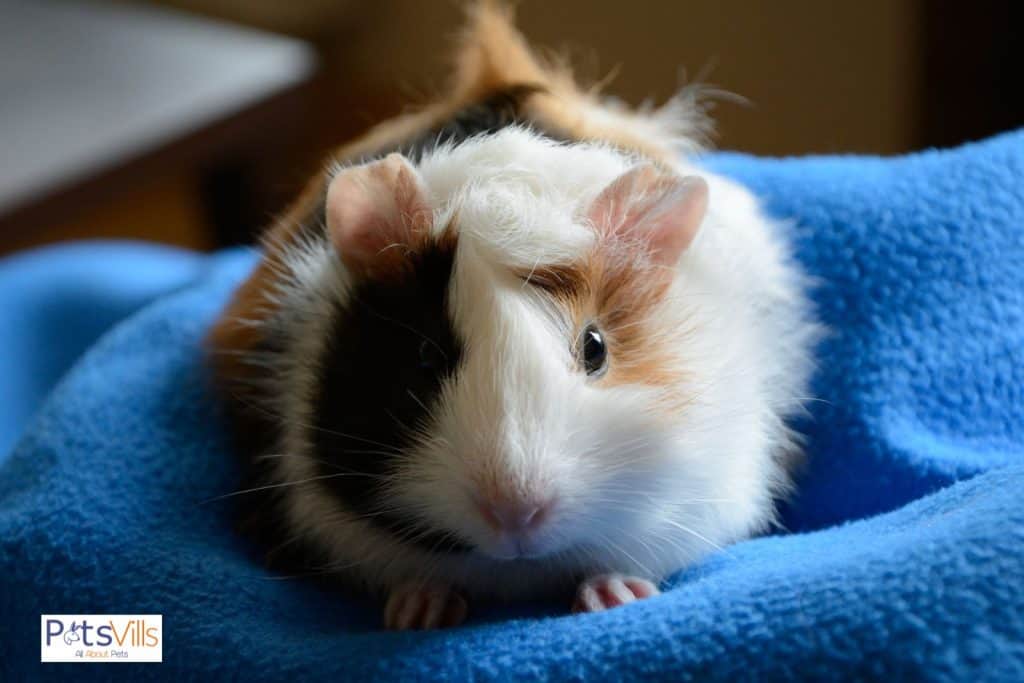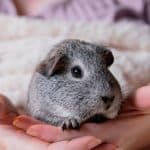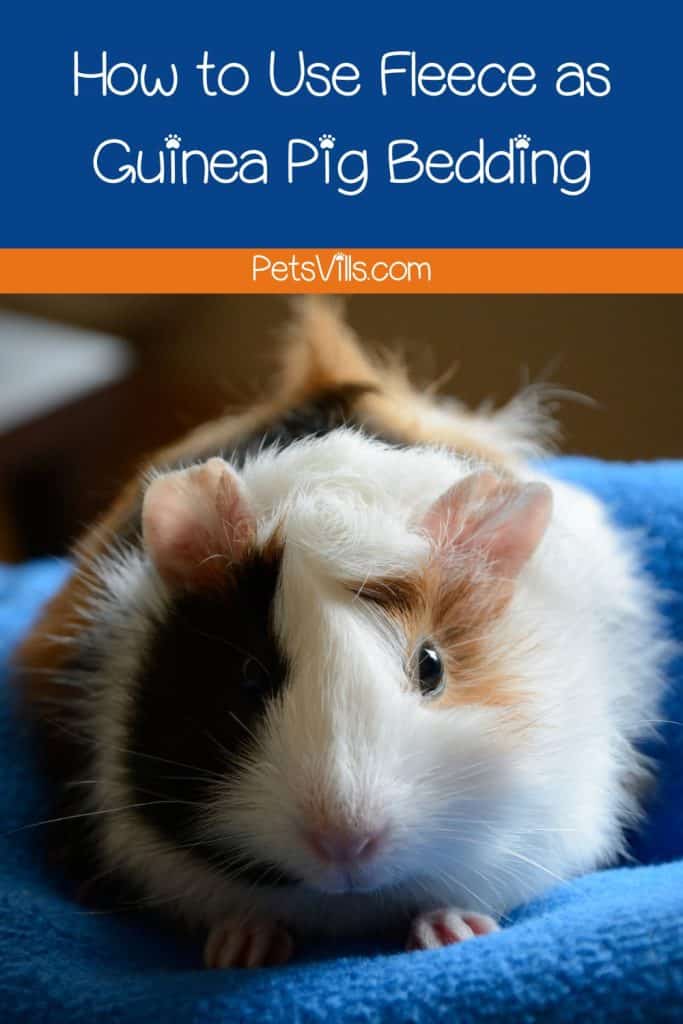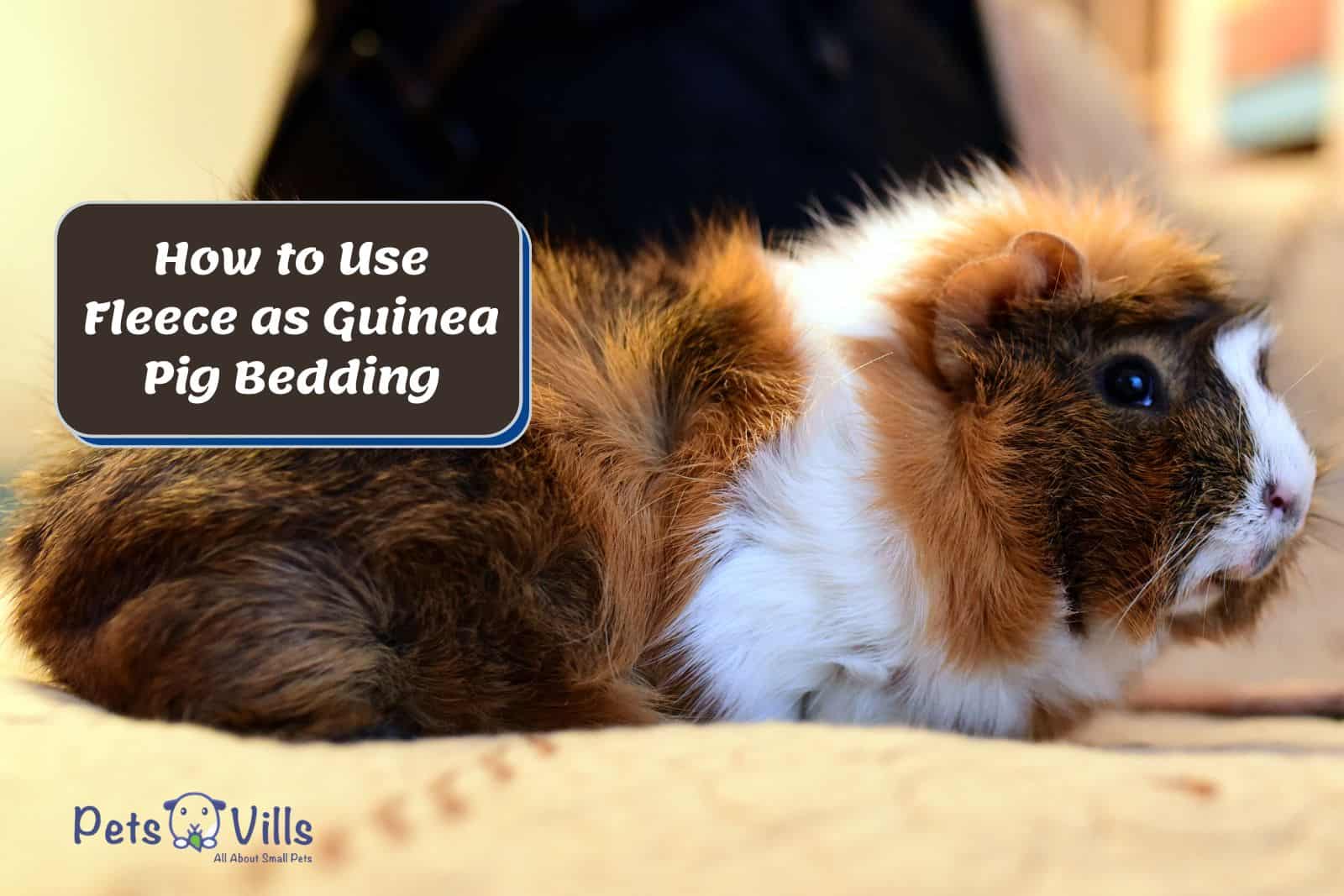Wondering how to make using fleece as guinea pig bedding a breeze? Look no further!
As a guinea owner who has consulted with experts and researched various sources, I know the importance of providing a comfortable and stress-free environment for your pal.
That’s why I’m here to share a well-researched 4-step process to ensure a cozy and stress-free environment for your guinea friend.
Keep reading to say goodbye to the hassle of traditional bedding and say hello to the comfort of fleece – your guinea will thank you!
Table of Contents
Key Takeaways
- Using a fleece for guinea pig bedding is a multi-layer process. You’ll need to support the layers of fleece with an absorbent layer, such as puppy pads or towels.
- The fleece must be washed, dried, and layered correctly to be effective. Otherwise, it’ll lead to urine leaks and other issues inside the cage.
- Most owners love fleece due to its comfort level and convenience. The only drawback is its higher price, and it can’t be used in outdoor hutches.
4 Steps to Use Fleece as Guinea Pig Bedding
Since you know all about how to use fleece for guinea pigs, it’s time for the main event. Let’s dive into how to use it correctly inside your guinea pig cage!
#1 Washing Your Fleece Material
As with most activities, preparation is required when using guinea pig fleece bedding.
Unfortunately, this entire process can become tough and non-manageable without proper prepping.
It’s the only way to prevent odors and fleece from not absorbing liquids. So you’ll want to go into the process knowing preparation is critical to a successful experience.
You’ll want to start by washing the fleece before placing it in the indoor cage. But don’t use scented laundry detergents when putting them in the washing machine.
If you do, it’ll stop the water barrier in your layers of fabric from breaking down. This isn’t ideal because it’ll prevent the fleece layer from increasing its absorbent properties.
In any case, you’ll want to let the fleece liner through at least three times wash cycles. This number should ensure it’s ready for use.
I’ll walk you through the drying process in our next step.
#2 Start the Drying Process
Drying your fleece material is a simple process. In fact, I find it to be a very relaxing experience, especially when hanging them up indoors or outdoors.
But other people won’t enjoy hanging up the fleece material. Thankfully, these people can use a regular dryer to get the job done.
However, a few rules of thumb guidelines exist when using a dryer. First, never use “dryer sheets because they can also damage the fleece fibers” (2).
These dryer sheets will only hamper your progress by making the fleece less absorbent. So please, don’t handicap yourself by making this massive mistake.
As for dryer settings, I’ve found a low heat setting to be the most effective. I’ve been doing this process for several years and have not had a single issue.
But sadly, I did find out what happens when leaving fleece in the dryer too long. I ended up shrinking my liner to the point where it was unusable.
So I’d recommend taking out the fleece a bit earlier than usual. You can then finish drying it by hanging it indoors near a sunny spot.
#3 Choosing Your Ideal Absorbent Layer
Once your layers of fleece are dried, the real fun begins. You must now determine how to layer the guinea pig cage to incorporate the fleece bedding best.
Simply put, your main goal is to avoid the nightmare of a soggy cage bottom. This experience will only lead to urine leaks and an unsanitary enclosure.
So you’ll want to layer your fleece to prevent moisture from passing through it. As I mentioned earlier, puppy pads or towels are excellent options for an absorbent layer.
Other options include incontinence pads, mattress pads, or U-Haul blankets. It’ll depend on the cage size, but choosing the right one should be easy.
On the other hand, never use newspapers even if so-called experts tell you it’s the right move. Newspapers don’t absorb liquids effectively enough and start to smell quickly.
Sadly, I learned this the hard way when first attempting to use fleece as bedding. It was one of the worst few days of my life.
#4 Start Layering
After choosing your layer material, place two of them (towels, puppy pads, etc.) on your cage base or bottom. It’ll provide an excellent support system for your fleece material.
You’ll then want to place a fleece layer on these two absorbent items. This setup should be enough to prevent any issues for your guinea pigs.
Once the entire cage is layered, it’s time to put your piggies back into the cage. Your cavies will enjoy the comfortable experience provided by their new bedding.
My cavies certainly did when they first got in the cage. They seem so much happier with the fleece material or the old traditional bedding.
Cage time will no longer seem like such a drag for them.
Discover the top choices for your pet’s comfort with our guide on the best alternative guinea pig bedding options, and don’t forget to check out our comprehensive review of the best guinea pig liners to ensure a clean and hygienic environment for your furry friend.
What is Fleece Guinea Pig Bedding?
Understanding how to use fleece as guinea pig bedding requires some background info. You must know what’s considered fleece bedding and how it works.

It’s guinea pig bedding made from quality fleece material. It provides a comfortable and effective way to ensure a more cozy indoor cage environment for caves.
However, this bedding must be multi-layered. If it’s not, liquids will soak the bedding when passing through it, creating a nightmare situation.
Instead, you want those liquids to pass through the fleece layer without soaking it. It’ll keep your indoor guinea pigs dry and not left to sit in urine-covered wet spots.
Otherwise, you’ll be left with a wet guinea pig. It’s not a situation any owner wants to be in, especially with smaller cages for guinea pigs.
But how do these liquids pass through without soaking the bedding? It’s where the “multi-layer” aspect comes into play.
You’ll have a second layer under the fleece to stop any issues. However, it’ll only work if it’s an absorbent layer to soak up the urine or liquid.
In my case, I prefer using towels or absorbent puppy pads for this absorbent material layer (1). These options are handy and get the job done efficiently.
Of course, there are fleece cage liners with the absorbent layer sewn into two fleece layers. They’ll cost more than DIY projects like the video below, but they’re very effective.
Is Fleece Bedding The Right Option For My Guinea Pig?
Fleece bedding is an excellent choice for most cavies. It stands out from other bedding options with its absorption, comfort for delicate feet (3), and promotion of better health.
I also love its convenience compared to wood shavings or natural paper bedding. After all, fleece is reusable, unlike disposable bedding, so it doesn’t need to be constantly replaced.
But sadly, some owners won’t be able to use fleece bedding for guinea pigs. It simply doesn’t mesh well outdoors (wood shavings would be better).
I’ve encountered many piggy owners who also complain about the upfront cost. It’s easy to see why since fleece bedding costs over $50.
So overall, you’ll need to figure out where you stand on this debate. Unfortunately, I can’t provide a general answer because it requires accounting for your circumstances.
You’ll need to determine whether the pros of fleece bedding are worth its cons. In my case, I’ve also found it to be a resounding yes, especially with my personal preferences.
If you’ve been thinking about the most comfortable and sanitary option for your pet, you might want to check out my comparison on “Guinea Pig Fleece Liners vs Bedding.”
This article will provide comprehensive information on each option’s pros and cons, helping you make an informed decision.
Curious about cozy comforts? Dive into my article ‘Is Fleece Bedding Right for Me?’ for the lowdown on snuggly sleeps!
FAQs
#1 What do you put under fleece in a guinea pig cage?

Towels, puppy pads, or even mattress pads are all excellent options. All three will ensure your fleece liners for guinea pig cages will work effectively.
#2 How do I keep my guinea pig fleece from smelling?
Spot cleaning on a daily basis is the easiest way to prevent a guinea pig cage liner from smelling. You’ll want to do a traditional washing every 3-4 days to keep the cage clean.
#3 What bedding should guinea pigs not use?
I’d recommend staying away from using pine shavings or cedar shavings. Both these disposable options can cause health issues if they aren’t treated properly. So it’s best to avoid them altogether.
Conclusion
After learning how to use fleece as guinea pig bedding, it’s time to try it for yourself. I promise its use will make your and cavy’s lives much easier and help you be a responsible guinea pig owner.
As Veterinary expert Denise Elizabeth Noonan from the University of Melbourne points out [4]:
“Good animal husbandry, combined with knowledge and understanding of the biology and behavior of the guinea pig, are the keys to prevention of most animal health problems.”
Now that you know how to use fleece for guinea pigs as an optimal type of bedding, you’re ready to create the ultimate slumber party for your pal!
Let me know how it goes in our comment section. I’d love to continue this conversation to ensure the process goes smoothly. Thanks for reading!

Resources
1. A Care Guide For Your Guinea Pig [Internet]. Seattle Animal Shelter. Available from: https://www.seattle.gov/documents/Departments/AnimalShelter/care-guides/care-sheet-guinea-pig.pdf
2. Communications AHAHA has a BA in, Policy has worked in a wide variety of industries RML about our E. How to Wash Fleece and Preserve Its Softness [Internet]. LoveToKnow. 2020 [cited 2023 Apr 3]. Available from: https://cleaning.lovetoknow.com/laundry-tips/how-wash-fleece-preserve-its-softness
3. Pododermatitis (Bumblefoot) [Internet]. dora.missouri.edu. 2022. Available from: https://dora.missouri.edu/guinea-pig/pododermatitis-bumblefoot/
4. Noonan DE. (PDF) The Guinea Pig (Cavia porcellus) [Internet]. ResearchGate. 1994. Available from: https://www.researchgate.net/publication/235936317_The_Guinea_Pig_Cavia_porcellus
Grigorina grew up surrounded by animals – dogs, cats, cows, goats, sheep, and horses and that has shaped her into what I am today – a crazy cat lady who always has a place for one more cat (or a dog). She has two female cats – Kitty and Roni, and two tomcats – Blacky and Shaggy, but she also feeds her neighbors’ cats when they come for a visit. I just can’t say no to them. Follow her on FACEBOOK AND INSTAGRAM
Read her latest articles HERE
Learn more about her


